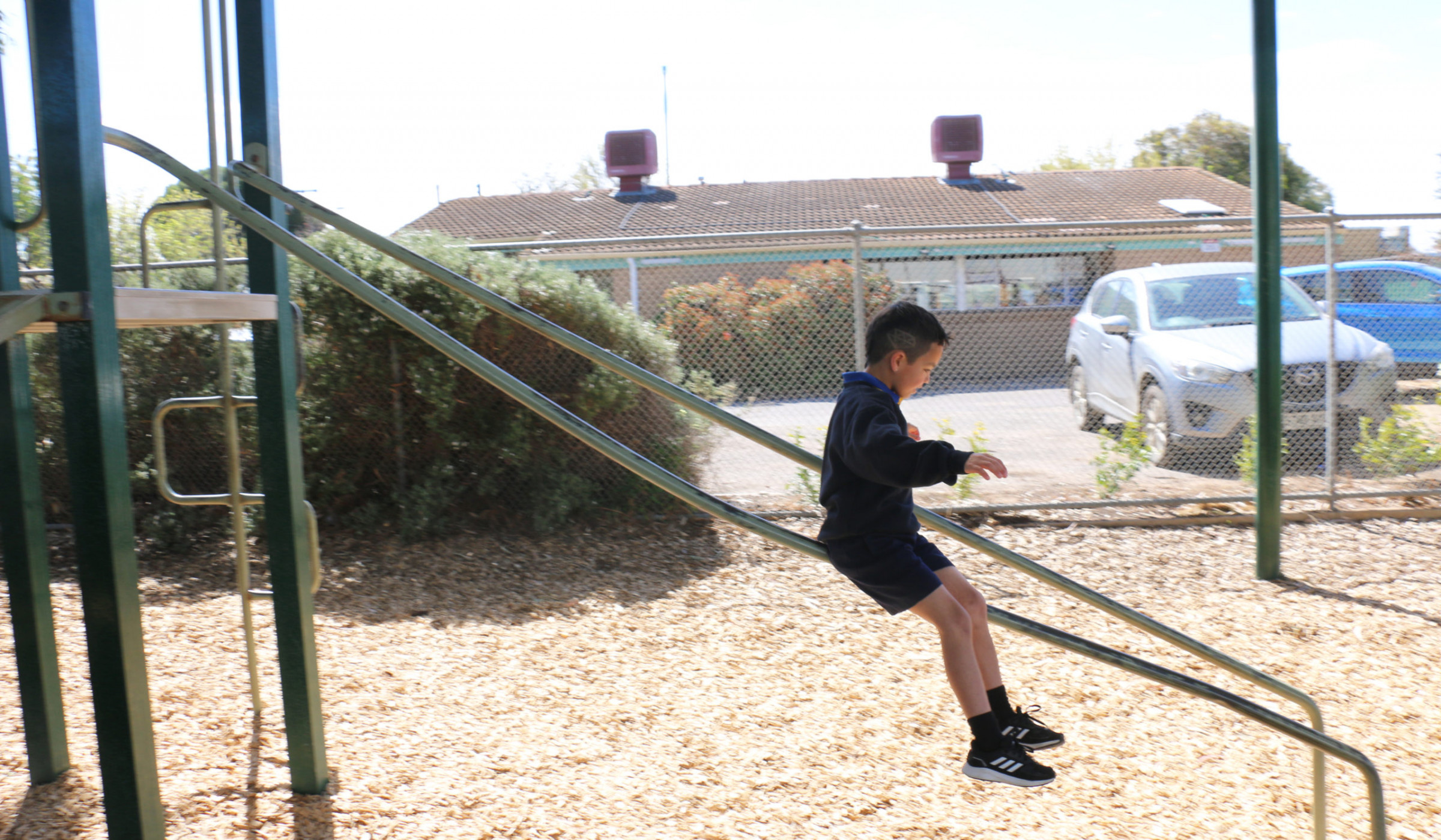With no funds available from his school's budget for a new playground, Year 1 Le Fevre Peninsula Primary student Wayne Brown has raised $1,698 to build one, because, as he sees it, he’s going to be there “for a long time”.
Six-year-old Ngarrindjeri student Wayne Brown is the hero every school needs
Sitting in a classroom populated by tiny desks, markers and pens, we ask Wayne Brown about the importance of being a leader.
The Year 1 Le Fevre Peninsula Primary School student, of Ngarrindjeri descent, gives CityMag the no-frills, straight-to-the-heart-of-the-issue answer you rarely get from high-profile subjects, such as politicians and government officials.
Le Fevre Peninsula Primary School is getting a new playground thanks to help from Wayne Brown.
“To play on the playground,” Wane says simply.
“I want everyone to be happy and play on the playground.”
We catch Wayne at his Port Adelaide public school while he’s on his lunch break, at 1pm on a Friday. It’s a couple of days after Le Fevre Peninsula Primary School launched a fundraiser to attract $20,000 from the public to build a new playground.
Wayne’s mum, Lena-Pearl Bridgland, who joins us at the table, says the school sent all students home with a brochure about the fundraiser, asking their children to become ambassadors. Wayne showed interest and jumped onboard.
Wayne’s perfect, grammar-free pitch caught the eye of this reporter: “My name is Wayne Brown and I’m in year 1 at Lefevre primary school I want to help my school raise money so we can build a new playground that I can play on because I’m going to be there for a long time and I want to play on the playground too and all my friends will have so much fun.”
So far, Wayne’s plea has raised $1,698 of the total $12,000 accumulated so far – the most raised by any student.
“I’m excited for him,” Lena-Pearl says, beaming at her son. She asks Wayne how he feels knowing that he’s the charity frontrunner.
“Excited,” he replies.

Wayne is excited for a new playspace, as the current one gives him splinters
Halfway through the interview, we’re joined by principal Bob Bowden. He says he has “no idea” how Wayne has raised the funds but he’s done “very well”.
Bob explains the money will go towards purchasing a netted playground. None of the existing playground equipment, such as the slides or swings, will have to be torn down.
While one might assume there would be a playground budget available to public schools in order to keep kids happy, Bob says Le Fevre Peninsula Primary needs its existing funding to repair or maintain other things, such as the ageing carpets he estimates are 30 years old.
These are not the things he would ask his students to raise funds for. A playground, on the other hand, is a much more engaging proposition.
“The playgrounds are a bonus because the kids can see something that they have done to put towards it, and they get something out of it,” Bob says.
“I don’t think fundraising should go to painting the classrooms or upgrading the rooms.
“We had this all painted over the Christmas holidays and new carpet stuff pulled through here, new furniture, because it was all pretty dilapidated.”
CityMag asks the Department for Education whether the responsibility of raising money for a new playground should fall on Year 1 students like Wayne.
A spokesperson responded saying schools are able to replace a playground through their internal financial management processes, “which can be supported by fundraising activities as well as drawing upon cash reserves”.
“This year, in addition to the RES (Resource Entitlement Statement) and capital works expenditure, the department released $37 million for high priority maintenance projects, of which Le Fevre Peninsula PS received $20,000,” the spokesperson said.
All government schools are designated into one of seven categories based on their level of educational disadvantage, with category one being the most socio-disadvantaged and category seven the least. Private schools are exempt from the list.
Le Fevre Peninsula Primary School moved up a level into category four in 2020, and the school received a total of $4,534,060.38 in funding to operate in 2021.
The reason Lena-Pearl enrolled Wayne into Le Fevre Peninsula Primary School was because of its high population of First Nations students.
“You want that community,” Lena-Pearl explains.
“You have that voice. It’s uplifting. It’s encouraging. You want that connection to Country. It just helps strengthen the children; they feel like they’ve got that strong identity.”
Lena-Pearl is surprised that despite the school’s reputation and age – it’s been around for 165 years – students have to fundraise for their own facilities.
Out of 377 students, Bob says Le Fevre Peninsula Primary School has roughly 62 Aboriginal pupils. “It’s very diverse,” he says, adding the second-largest non-Anglo-Saxon culture represented at the school is African.
Out of the $4 million in funding the school was allocated to operate this year, some goes towards improving outcomes for students with additional languages or dialects ($86,174.79), as well as improved outcomes for Aboriginal students ($205,952.28).
To compare, Adelaide Botanic High School, a category seven school, received $9,202,050.56 funding from the State Government, with 535 students enrolled this term.
Wayne, not waiting for any funding, has led the charge on his own.
As a young leader himself, we ask if there’s anyone he looks up to who he wants to emulate. The answer comes readily: Batman.
“Because he has a Batmobile and has lots of money,” he says.

A superhero exit








